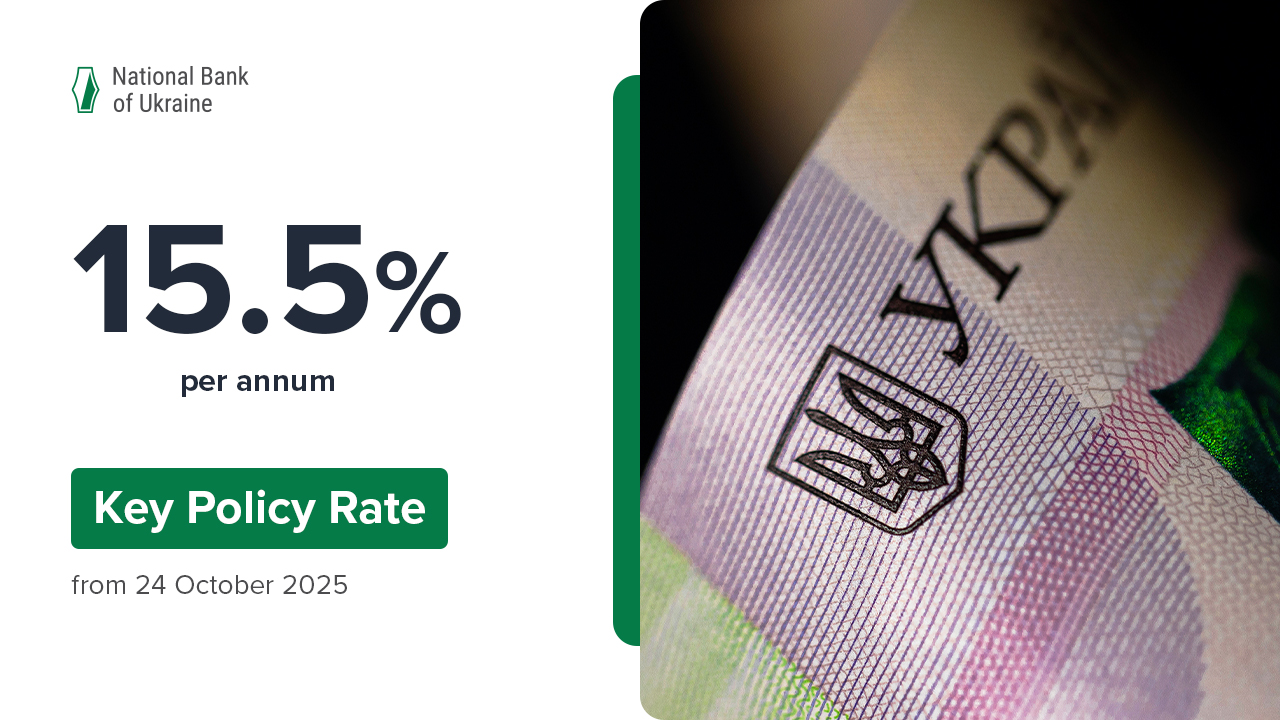The third quarterly Banking Sector Review published today suggests that in Q1 2017 positive trends in the banking system that had emerged in previous periods were taking hold as macroeconomic stability was maintained.
Demand for banking services kept recovering. For the first time since the outbreak of the crisis, domestic currency lending to households picked up. Excluding PrivatBank, which partially replaced retail loans in the P2P segment with on-balance-sheet loans, the growth rate stood at 2.8%.
Interest rates continued to move lower: interest rates on 12-month retail deposits decreased by 1.7 percentage points to 15.7% per annum in hryvnia and by 1.0 percentage point to 4.6% per annum in US dollars in the January through April period. The interest rate policy of state-owned banks was a major driver behind the decline in interest rates on hryvnia deposits. Interest rates on US dollar-denominated loans hit new record lows. This downward trend is expected to persist, underpinned by a 1 percentage point reduction in the key policy rate in April 2017.
In January- April 2017, six banks were resolved. As a result, concentration in the banking sector has increased, with 20 largest banks accounting for 90.6% of the banking sector's net assets. Overall, after two years of the banking sector clean-up, the banking sector's sustainability was restored: the share of financial institutions by assets in the sector that are exposed to risks due to their failure to meet the requirements set by the NBU does not exceed 1.5%.
In May 2017, the NBU began publishing data on non-performing loans calculated under new rules based on generally accepted international standards. As a result of the full recognition by banks, in particular by PrivatBank, of real quality of loan portfolios, the average level of NPL has increased to 55.1% (excluding off-balance data).
The major risk facing the banking sector is low operational efficiency of state-owned banks and the poor quality of their assets. To mitigate this risk, it is necessary to speed up the pace of reforming state-owned banks.
For greater detail, see The Banking Sector Review posted on the NBU’s website.
Data on loans published in the “Banking Sector Review” differ from the corresponding data published in the “Monetary Statistics” subsection as they:
- contain data on loan that were solvent as at the reporting date, unless otherwise indicated;
- they cover data provided by banks excluding their branches operating abroad;
- comprise amounts placed with other resident and non-resident banks;
- adjusted for loan loss provisions, unless otherwise indicated;
- personal savings (deposit) certificates are not reflected in these data, unless otherwise indicated;
- comprise information about non-resident clients, while monetary statistics data comprise information only about resident clients.






